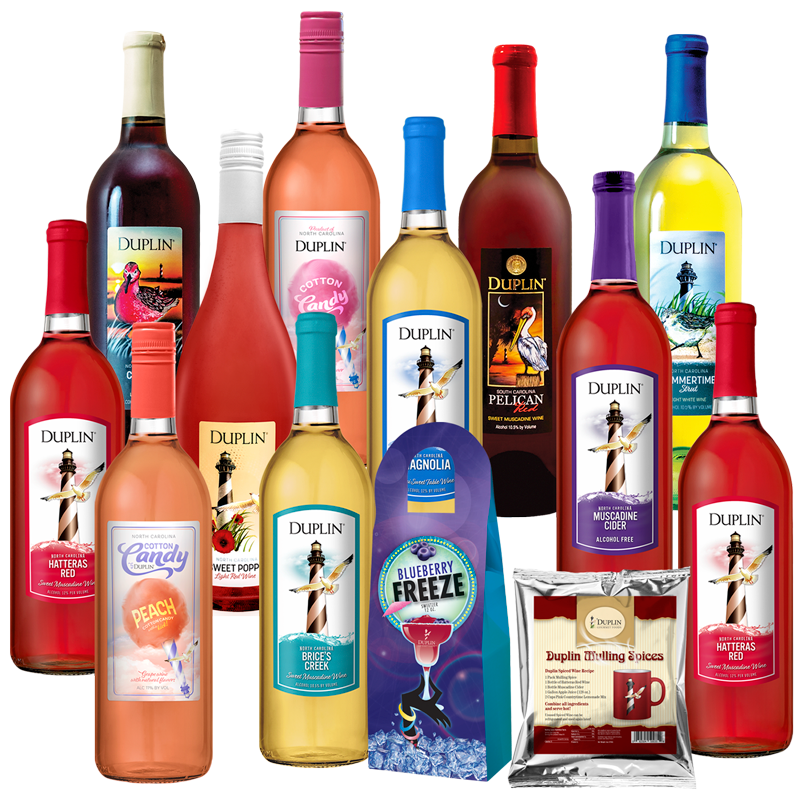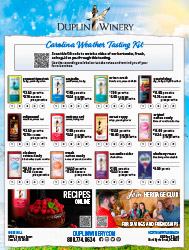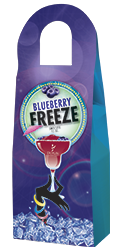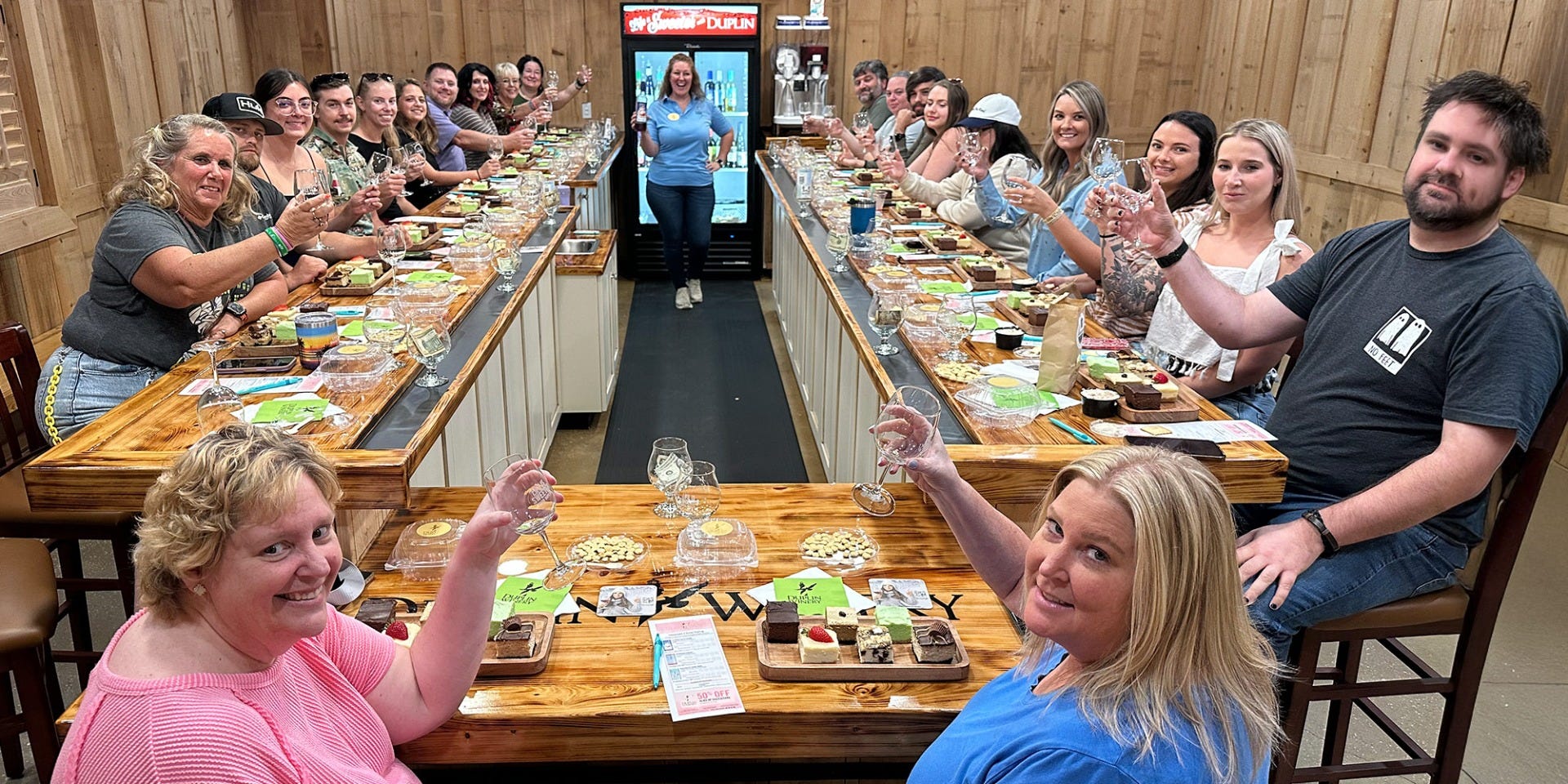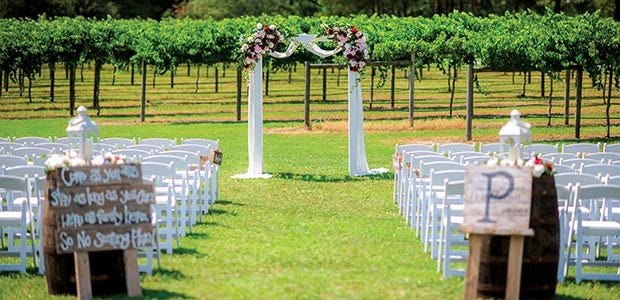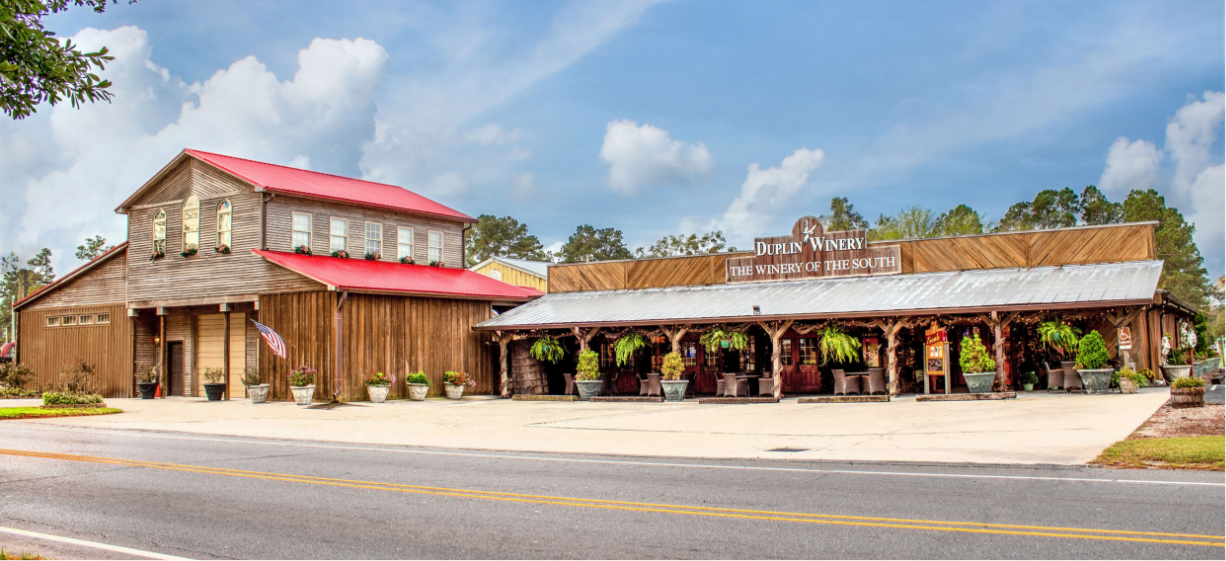Hate winter? This wine tasting lets you change the weather
Don't like the weather? Stick around; it will change. One day it's 70 in January. The next day, it's an ice storm. That's life in Duplin's North Carolina home, and lots of other states. When we don't want to wait for the weather to change, we pour a glass of wine that suits the season we desire. That's what inspired this tasting.
The Carolina Weather Tasting Kit rolls from nights by the fire to flip-flops on the beach. Sip by sip, you experience winter, spring, summer and fall. There's puffer-vest-worthy reds, easy whites that suit a fresh pink button-down, a frosty wine slushie begging flipflops and mulled wine for thinking about fall leaves.
Here's how to host the best wine tasting party for this kit:
Party favors
Have fun clothes and favors for tasters to set the mood for each season. Lay our scarves, skull caps, flower crowns, flipflops, Hawaiian-style leis, beach hats and mini footballs, to name a few.
Fun tasting stations
Set up tasting stations in different parts of your home, say winter by the fire, a spring area decorated with fresh flowers, summer on beach chairs and a fall table full of pumpkins and cinnamon-scented candles.
Season-by-season snacks
Plan snacks around the seasons. Think cheese fondue for winter, deviled eggs for spring, sliders for summer and mini grilled cheese sandwiches for fall. Check our recipe section for ideas.
Meet the bartenders
If you still need to purchase the Carolina Weather Wine Tasting Kit, do it now. If you have the kit, use the wine tasting scorecard that's included. Print extra copies for guests or share the QR code on the scorecard so they can download their own. Then just follow along with the video above as Duplin bartenders guide you through each wine. Scroll down this blog post to find more tasting notes.
How to taste wine like a Duplin pro
See. Swirl. Sniff. Sip. Savor. Use this 5-step system for each wine on the tasting sheet included in your kit. Here's how.
See: First, hold a glass of wine up to a light and look at the color. It will allude to the variety of grapes used and what the wine will taste like. Is it Scuppernong? Nobel? Carlos? Another? Color also indicates flavor. A bright, saturated hue often means a more intense flavor. See if you can guess the grape and flavor before you sip.
Swirl: Consider the wine's body next. Swirl the wine in your glass to determine if it is light or heavy. You're looking for the viscous streaks running down the side of the glass after you swirl. They're called "legs." Sweeter wines will leave streaks to cling or move slowly. That means a heavier body.
Sniff: After you swirl, really dip your nose into the glass and inhale the aroma, which wine pros call the "bouquet" or "nose." Pausing to experience the bouquet heightens your senses and anticipation of the first sip. Think about what you are smelling. Is it fruity? What kind of fruit? Berries? Ripe banana? Musky honeydew melon? Pure grape? Are you getting floral notes like honeysuckle or gardenia? See if you pick up unexpected smells like pine or fall leaves. Describe the bouquet and discuss it.
Sip: Take a sip slightly larger than normal and hold the wine in your mouth for 3-5 seconds. Let the wine coat the tongue and the inside of your mouth. Wine releases more flavors as it warms on your taste buds. Before swallowing, purse your lips and breathe in gently, allowing the air to travel across the wine in your mouth to get the full flavor profile.
Do the flavors you're experiencing match the wine's nose? When and where are you tasting those flavors? Are you getting, say, banana bread on the first sip and then astringency or acidity at the end, which is called "the finish." Where do flavors hit you? On the tongue? On the side of your mouth.
Think back to the wine's body. Compare the texture of different wines, how they feel in your mouth. Light as water or heavier, like the texture of sweet iced tea? If you're sampling a sparkling wine, do the bubbles feel fine or medium in size. Compare your experience to the wine's description and see if it matches.
Savor: As you continue sipping, note how the sensation is slightly different from what you experienced when the wine was resting in your mouth on the first sip. This is the point when you taste and feel the wine's finish. As you continue tasting, note how the wine pairs with the Duplin Gourmet crackers and Muscadine Pineapple Habenero dip. See which wine you like best with those snacks and others you may be enjoying during your at-home or virtual tasting. Cheers!


Summertime Strut
Duplin's driest white wine is a blend of Carlos and Doreen Muscadine grapes. Together, they produce a light-bodied and fruity sip with a crisp finish that makes every day feel like a summer day. The Sanderling Sandpiper on the label is a coastal bird found on the beaches of North and South Carolina during the winter.


Magnolia
Carlos Williams, a N.C. State University professor and his team developed the namesake grape in Magnolia. The grape is named after Williams’ hometown, Magnolia, N.C. This semi-sweet, fruity wine in 1989 earned Duplin its first international prize. In 2006, Martha Stewart Living magazine billed it one of summer’s best wines. Note the medium body, sweet start and clean finish. Magnolia might remind you of riesling. It pairs really well with spicy foods.


Brice's Creek
Brices' Creek is named after a tiny community near New Bern, N.C., where pine forests are calming and peaceful.
Take time to notice the slight floral start. Do you sense jasmine? Yellow jessamine? Pay attention to the smooth finish and light alcohol bite. This wine’s complexity is thanks to a combination of Scuppernong and Niagara grapes. Niagara is not a muscadine grape but a native American vitis labrusca variety developed in Niagara County, N.Y.


Coastal Shag
Duplin's driest red wine contains a blend of early harvest Muscadine grapes. Light-bodied with a fruity start and a smooth finish, it might remind you of a lazy day at the beach and a night of dancing on the boardwalk. The label features the Red Knot, another coastal Sandpiper that frequents both North and South Carolina shores.


Pelican Red
Pelican Red combines mid-harvest muscadines with Pink Catawba grapes. Catawbas are a cross between Vitis Labrusca and the European cultivar Semillon. Native to France, Semillon is a golden, thin-skinned grape used in sweet and dry wines. Historians aren’t sure who first crossed these two grapes, but early vines were said to have grown on a so-called “Rose Hill property” in Maryland.
With just 7% sugar, Pelican Red is mid-sweet with a smooth floral finish.


Hatteras Red
Sweet and fruity, with a feisty bite on the finish, Hatteras Red evokes all the charms of a day at the beach.
Hatteras Red’s flavor journey from sweet to slightly acidic is especially appreciated by beer drinkers.
With a 10.2% sugar level, Hatteras Red is best served chilled. The wine is deliciously drinkable on its own but is also prized for its versatility in cocktail recipes. Infuse a bottle of Hatteras Red with a fresh, halved jalapeno for 24 hours and then serve the spirited wine on the rocks with a shot of vodka.


Sweet Poppy
Sweet Poppy is fun, fizzy and blooming with a hint of peach. The first sip is full of harmonious fruity flavors followed by a satisfyingly fizzy finish. How do you think the bubbles affect the flavor of the wine? Also, ponder the story behind that beautiful red flower on the bottle. Red corn poppies have long been a symbolic tribute to our troops. Duplin put a red corn poppy on the wine’s label to honor service members, past and present.


Original Cotton Candy
Vanilla berry sweetness takes you back to giggles on the Tilt-a-Whirl. Sip Cotton Candy Original with salty snacks, Buffalo wings, bacon-wrapped hot dogs or mounds of nachos. Whip up Cotton Candy Margaritas or try a wine slushie version of a Cotton Candy Cosmo.


Peach Cotton Candy
Cotton candy plus peach is finer than sugar on a funnel cake. Fruity notes of peach and vanilla pirouette smoothly around sweet berries. Make Cotton Candy Peach ice cubes to float in a glass of this delectable wine. Barbecue night is better with a cold glass of half Cotton Candy Peach and half sweet iced tea, plus a little ginger. Try a beautifully layered Cotton Candy Peach & Blueberry Wine Slushie made with frozen peaches and blueberries.
 ?>
?>
